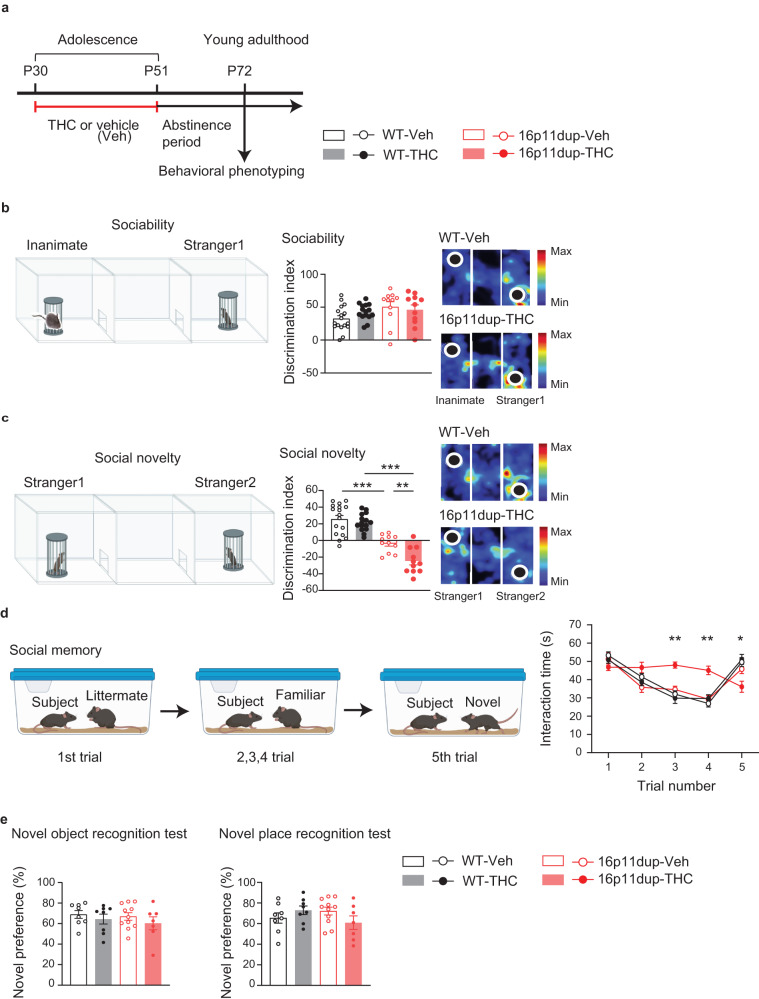Fig. 5. Social novelty recognition and memory deficits synergistically produced by adolescent THC treatment and 16p11dup.
a Schematic diagram of the adolescent THC treatment protocol. b (Left) Schematic diagram of the three-chamber social interaction test for sociability. (Middle) Sociability phenotypes in WT and 16p11dup mice with adolescent THC or vehicle (Veh) treatment as indicated by discrimination index ([Stranger 1 − Inanimate mice sniffing time]/[Stranger 1 + Inanimate mice sniffing time] × 100 (%)). (Right) Representative heat maps depict movements of the WT-Veh mice vs. 16p11dup-THC mice. c (Left) Schematic diagram of the three-chamber social interaction test for social novelty preference. (Middle) Preference of social novelty in WT and 16p11dup mice with adolescent THC or Veh treatment as indicated by discrimination index ([Stranger 2 − Stranger 1 sniffing time]/[Stranger 2 + Stranger 1 sniffing time] × 100 (%)). (Right) Representative heat maps depict movements of the WT-Veh vs. 16p11dup-THC mice. d (Left) Schematic diagram of the 5-trial social memory test. (Right) Interaction time of WT and 16p11dup mice receiving adolescent THC or Veh treatment with an ovariectomized female mouse. b–d WT-Veh (n = 17 mice), WT-THC (n = 15 mice), 16p11dup-Veh (n = 11 mice), and 16p11dup-THC (n = 11 mice). e (Left) Preference of novel object in novel object recognition test (NORT) in WT and 16p11dup mice with adolescent THC or Veh treatment. (Right) Preference of novel place in novel place recognition test (NPRT) in WT and 16p11dup mice with adolescent THC or Veh treatment. e WT-Veh (n = 8 mice), WT-THC (n = 8 mice), 16p11dup-Veh (n = 11 mice), 16p11dup-THC (n = 7 mice). ***p < 0.001, **p < 0.01, *p < 0.05 (c p values are WT-Veh versus 16p11dup-Veh: p < 0.0001, WT-THC versus 16p11dup-THC: p < 0.0001, 16p11dup-Veh versus 16p11dup-THC: p = 0.0074, d THC × 16p11dup interaction for Trial 3 [F1,50 = 11.98, p = 0.0011], THC × 16p11dup interaction for Trial 4 [F1,50 = 9.226, p = 0.0038], THC × 16p11dup interaction for Trial 5 [F1,50 = 4.095, p = 0.0484]), determined by two-way ANOVA with post hoc Tukey test. Each symbol represents one animal. Data are presented as the mean ± s.e.m.

